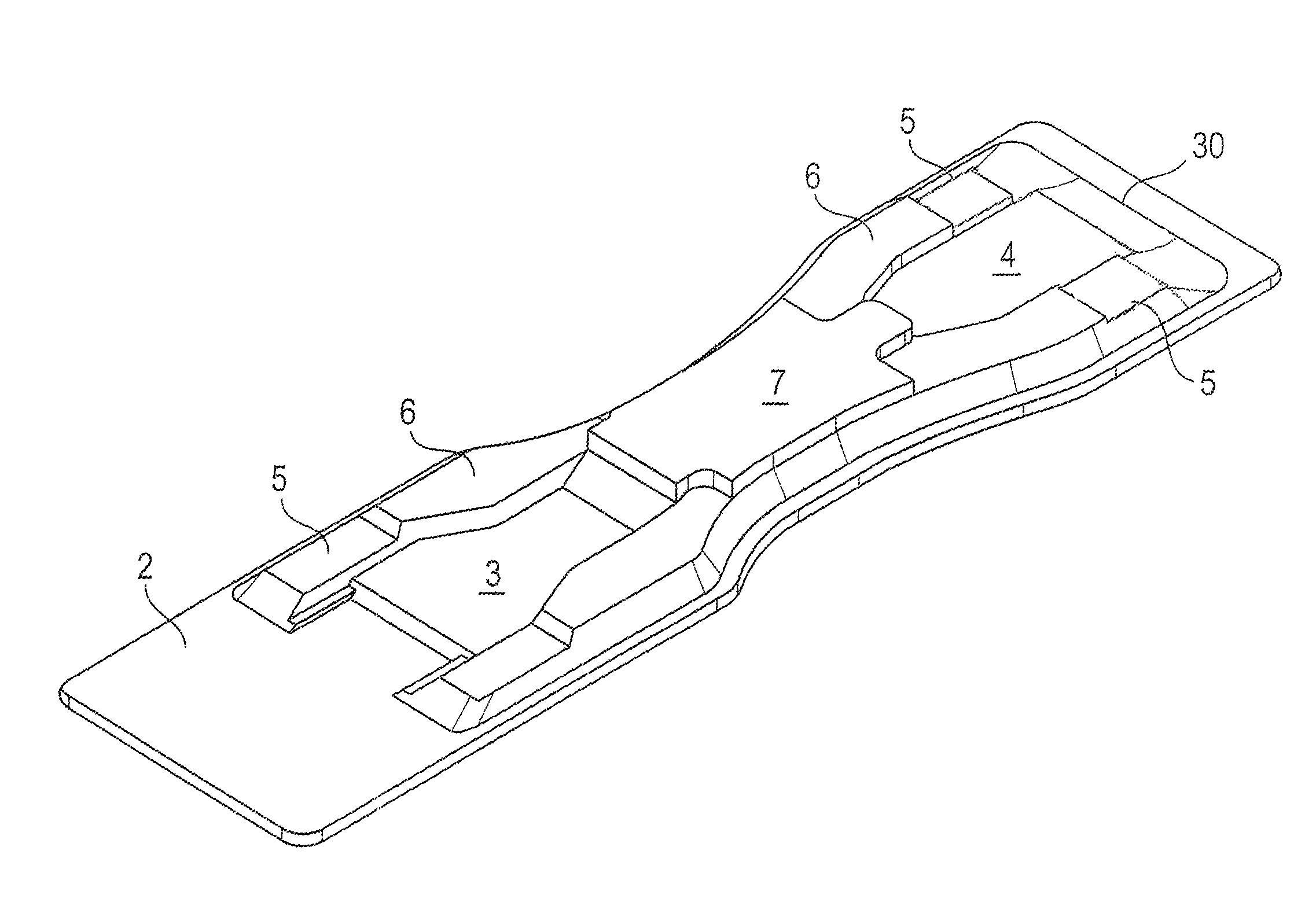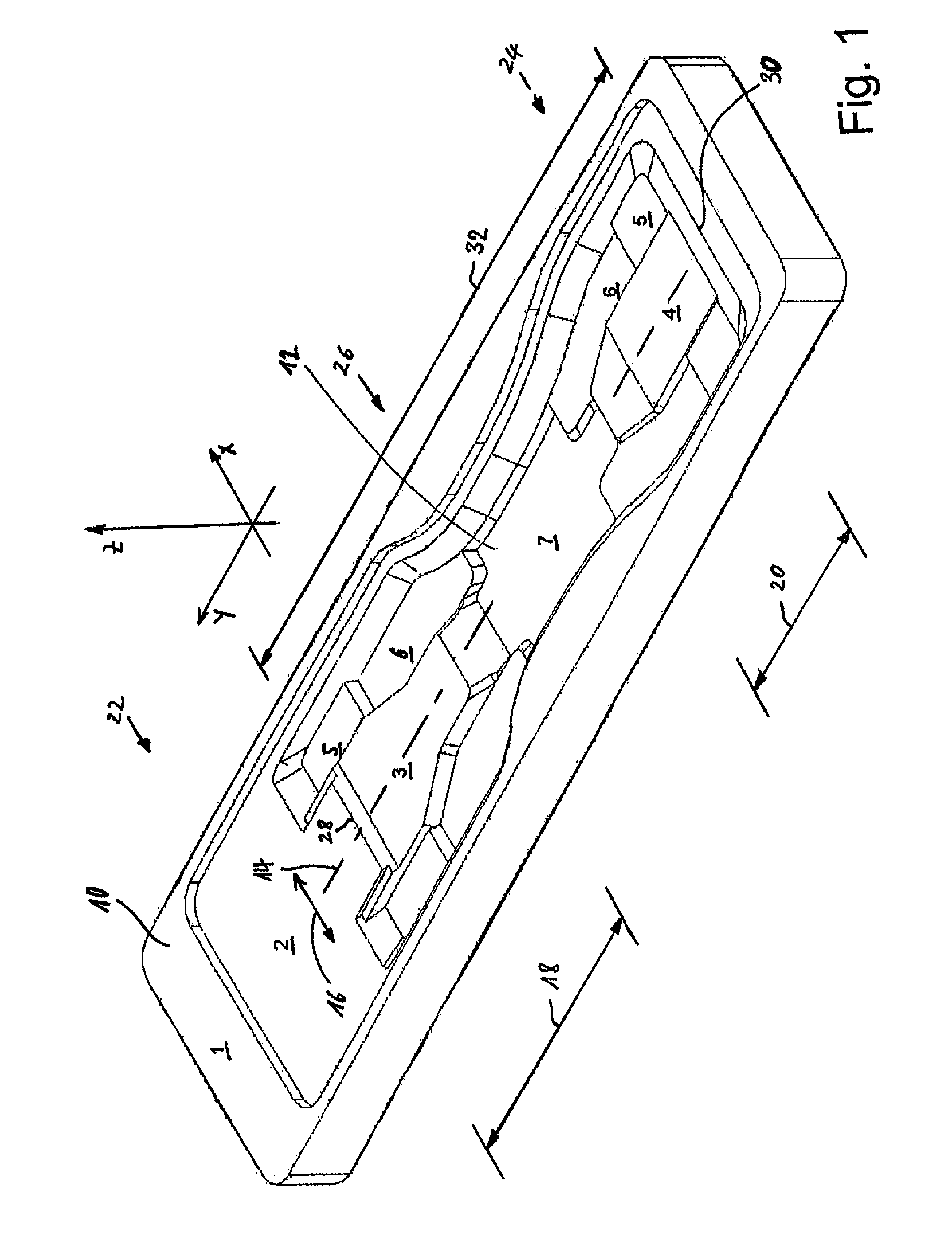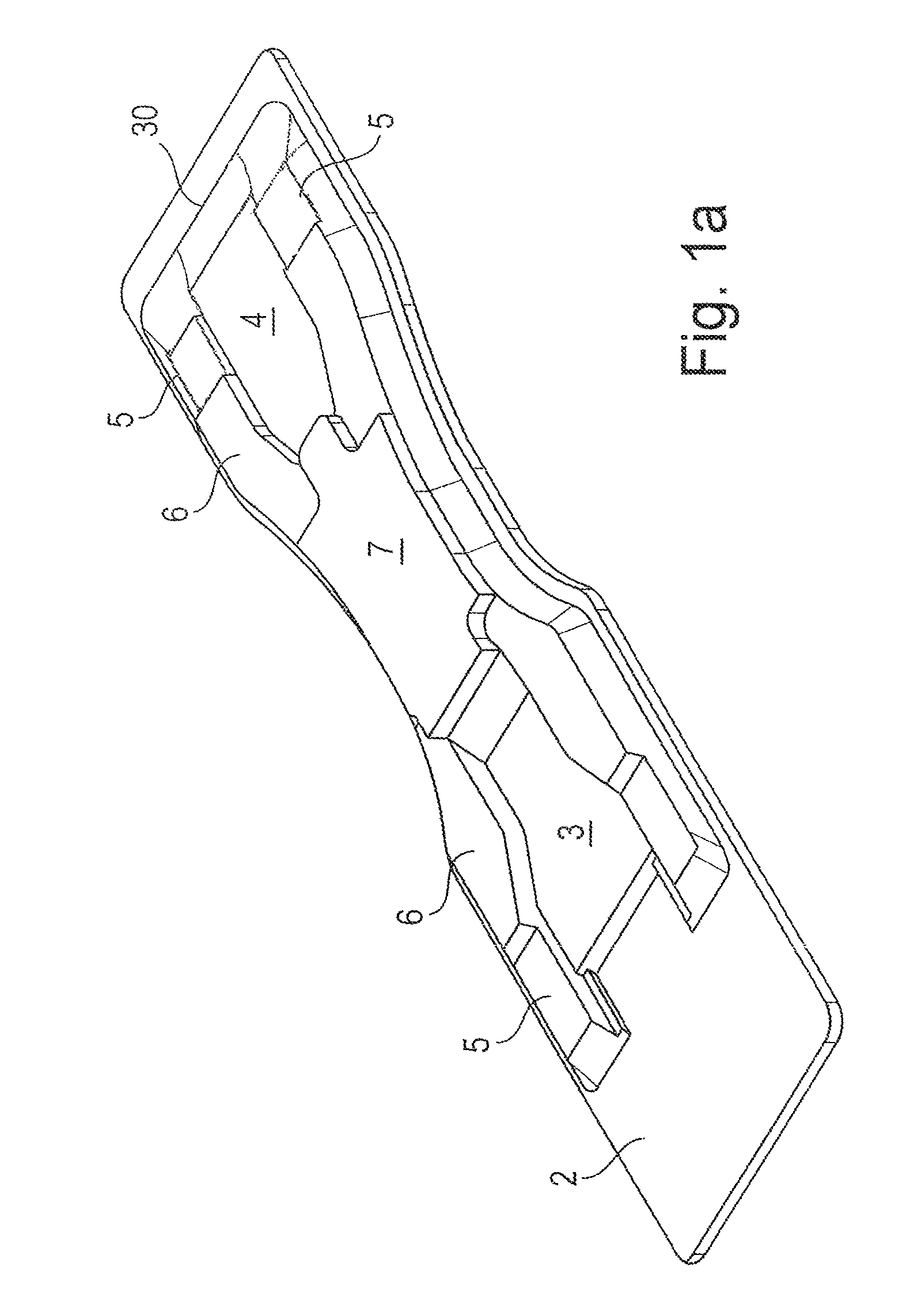Disposable hygiene article
a technology of hygiene articles and disposable parts, which is applied in the field of disposable hygiene articles, can solve the problems of insufficient absorption capacity, limited space between the legs of users, and impair the function of hygiene articles, and achieve the effects of enhancing capillary liquid transport, facilitating liquid absorption, and facilitating liquid absorption
- Summary
- Abstract
- Description
- Claims
- Application Information
AI Technical Summary
Benefits of technology
Problems solved by technology
Method used
Image
Examples
Embodiment Construction
[0037]An “absorbing element component” in accordance with the present invention means an entire absorbing element of a subject hygiene article, a layer of a multi-layer absorbing element, or a three-dimensional component thereof. “Storage capacity” in accordance with the present invention means the capacity for permanent storage of liquids within absorbing element materials, the capacity being determined and defined by the retention capacity in a centrifugal test, as is explained in detail below.
[0038]The above-mentioned section length of between 20 and 100% of the length of the observed absorbing element component is determined by a comparison of the storage capacity between longitudinal sections of the hygiene article, the absorbing element, or the absorbing element component. The absorbing element or absorbing element component is thereby disposed on a flat support and divided into longitudinal sections in the longitudinal direction, in particular, of a length of 5 to 40 mm and p...
PUM
 Login to View More
Login to View More Abstract
Description
Claims
Application Information
 Login to View More
Login to View More - R&D
- Intellectual Property
- Life Sciences
- Materials
- Tech Scout
- Unparalleled Data Quality
- Higher Quality Content
- 60% Fewer Hallucinations
Browse by: Latest US Patents, China's latest patents, Technical Efficacy Thesaurus, Application Domain, Technology Topic, Popular Technical Reports.
© 2025 PatSnap. All rights reserved.Legal|Privacy policy|Modern Slavery Act Transparency Statement|Sitemap|About US| Contact US: help@patsnap.com



